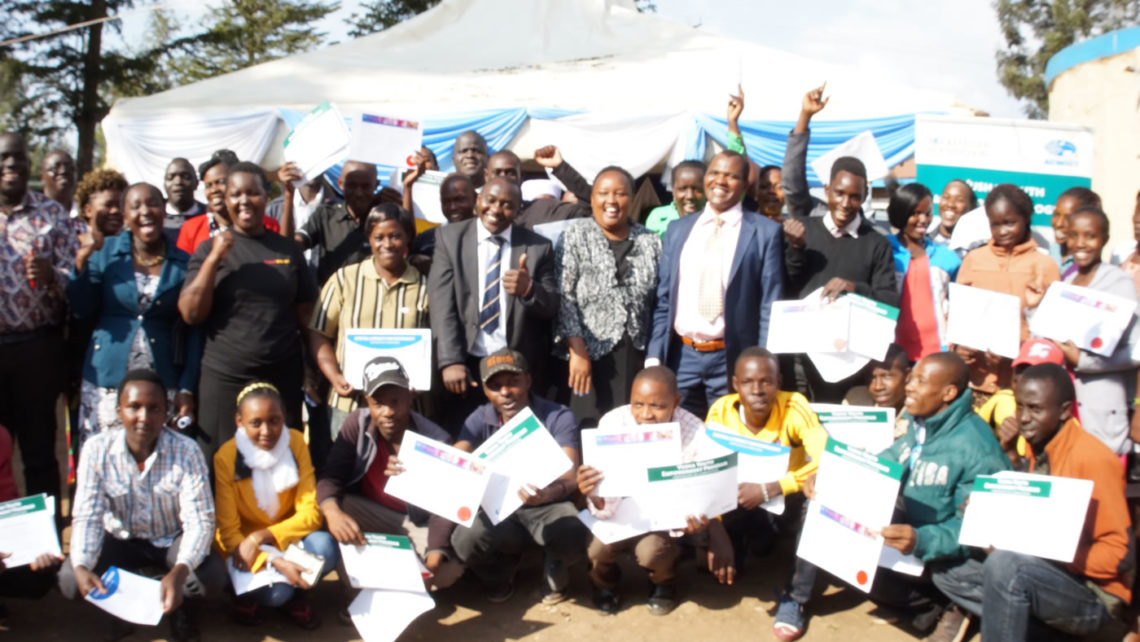Context: Kenya, like other countries in Africa is facing high youth unemployment. The country’s youth are at least three times as likely as adults to be hit by open unemployment. Young females are hard hit by unemployment rate of close to 50 per cent as compared to about 30 per cent for young males. At a higher age, the female youth are three times more likely to be unemployed than the male youth. Females at age 34 years, for example, recorded unemployment rates of above 15 per cent compared to 5 per cent for male youth.
Implementation of programme/ initiative: The Kenya Youth Empowerment Program also known as Ninaweza was a 24-month youth employability program launched in 2011. It was funded by the World Bank and Microsoft, coordinated by the International Youth Foundation and implemented by the African Centre for Women, Information and Communications Technology. The program targeted young women aged 18-35 years who have completed high school, have been out of school for at least one year, are unemployed, and are living in the informal settlements around Nairobi. The purpose of the program was to improve the earning capacity of young women. It provided young women with technical training in information and communications technology (ICT), training in life skills, work experience through internships, and job placement support. The ICT training was focused on computer hardware and software, entrepreneurship, and business process outsourcing. The life skills component addressed areas such as self-awareness, emotional intelligence, problem-solving, goal setting, job searching and health practices. The training lasted for eight (8) weeks after which the women entered an eight (8) week internship followed by six (6) months of job placement support.
Main challenges: Among the key challenges faced by the Ninaweza program was limited time by employers for supervision of young women on internship since the concept of internship is not fully integrated in Kenya. There was also limited or no stipend support for internship and this inhibited the young women’s full take-up and participation in the program. There was also a challenge with the recruitment and retention of participants in the programme due to high levels of poverty in the informal settlements and absence of monetary support to the participants. This challenge was addressed by designing and offering the training program in morning and afternoon shifts thereby allowing program participants to attend to other commitments during the day. Also, highly needy participants from far off areas were granted transportation stipends.
Results achieved: As at the time of its conclusion, the program had reached 530 young women against a target of 700. Impact evaluation of the program revealed that the beneficiaries who received a package of training in ICT and life skills, alongside job experience through internship and job placement support gained knowledge in ICT by 17.3 per cent points more than those who did not receive the intervention. Also, the program beneficiaries who received intervention package that includes ICT training, job experience through internship and job placement support but without skills training gained knowledge in ICT, which was 15.8 per cent points more than those who did not benefit from the program. The program also increased the likelihood of its beneficiaries obtaining a job with those who received the intervention being 14 per cent more likely to obtain jobs than those who did not participate in the program. In addition, young women who received the Ninaweza intervention were more likely to hold full-time employment positions while those who did not benefit from the program were more likely to work as casual labourers. The Ninaweza program was also successful in increasing the weekly income of the participants. The weekly income of beneficiaries who received the package of training in ICT and life skills together with job experience through internship and job placement support was US$ 5.17 higher than the weekly income of those in the control group. Equally, the Ninaweza program beneficiaries who received all the interventions except skills training had a weekly income, which was US$ 5.88 higher than the weekly income of those who did not participate in the programme. The Ninaweza program also bolstered the confidence of the young women. The young women who received the intervention were 1.4 times more likely to be confident at the end than those in the control group. It also improved job matching amongst its beneficiaries. The proportion of young women who received the Ninaweza intervention and worked in the ICT sector was four (4) times higher than those who did not receive the interventions.
Moving Forward: Support services such as child care and travel stipends can be vital to youth participation, especially if the young people are from disadvantaged backgrounds. A greater focus on self-starters, creativity, flexibility, passion and commitment is also important for project success.
Replicability: One of the factors that led to the success of the Ninaweza project is that prior to the training and to ensure that the technical training responds to the market demands, the project implementing organization conducted a study to assess the needs of the local industry. This meant that the training was developed with full knowledge of the training gap to be addressed. This is an important lesson and a core area of learning and replicability. As part of the replicability mechanisms, it is important that counselling is integrated in the life skills training so as to improve the attitudes of the beneficiaries towards work. It is also important that mechanisms be put in place to remove the culture of invulnerability so as to reduce crave for handouts. Replicating organizations should also consider increasing the duration of training so that the young women can spend more time on their training before transiting them to an internship. Also, life skills training might have provided advantages that helped participants to obtain more desirable jobs.
References:
World Bank and International Youth Foundation (2013). “Testing What Works in Youth Employment: Evaluating Kenya’s Ninaweza Program”, Vol. 1: Summative Report, Global Partnership for Youth Employment
Project Details
Date: July 24, 2017
